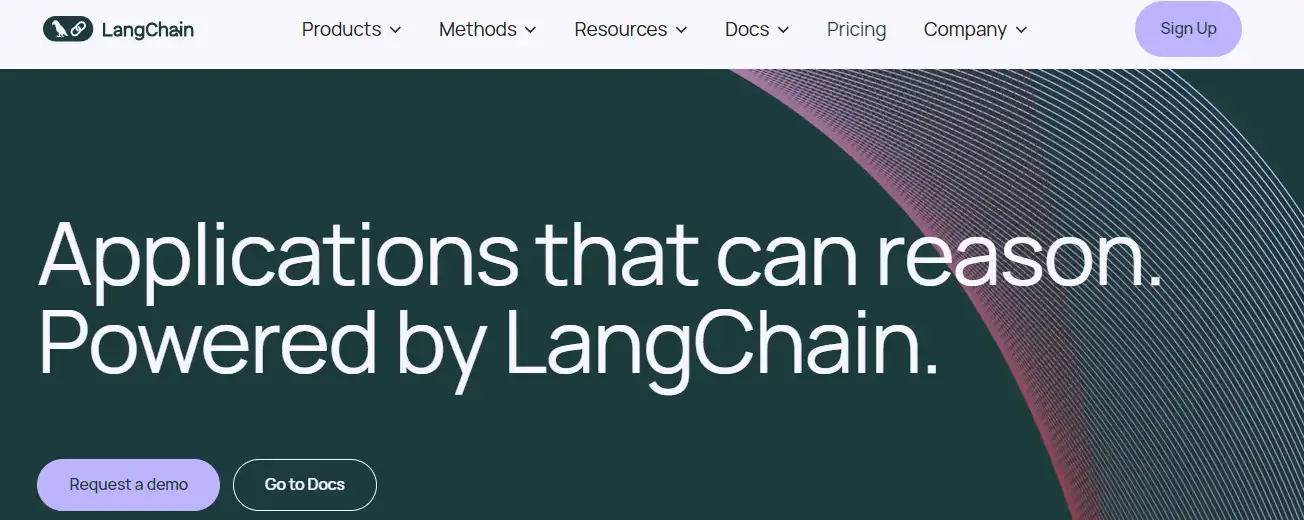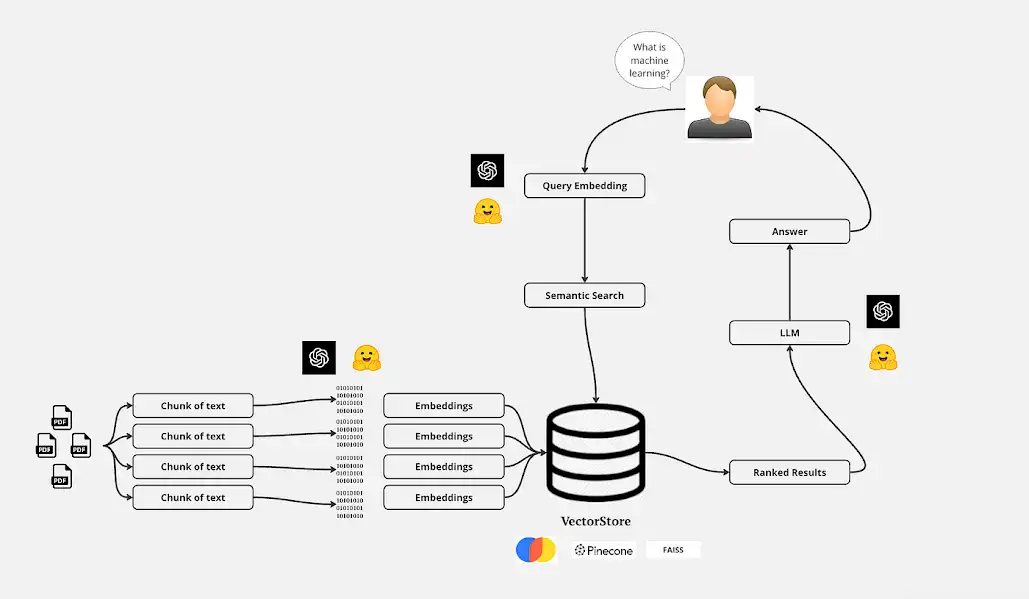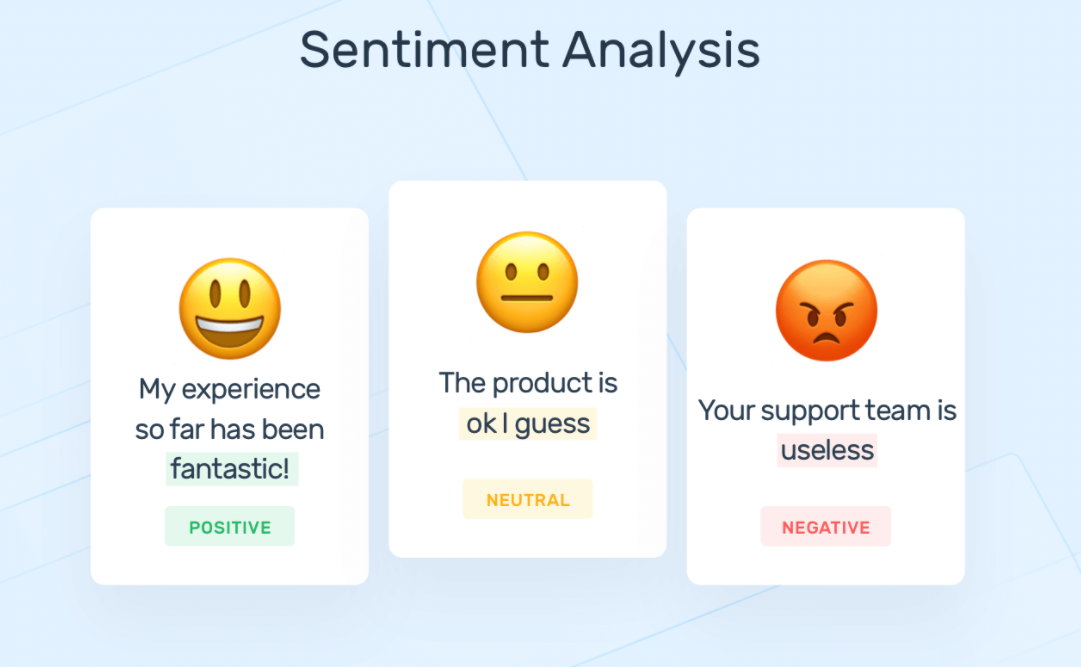Introduction
Are you confused on how to use LangChain for chatbot development? Then, jumpstart your chatbot development with this beginner-friendly LangChain tutorial. It covers creating a chatbot from setup to deployment and testing.
This guide aims to provide a clear understanding of chatbot development. It will equip you with skills to build your own chatbot in the rapidly growing chatbot market which is projected to reach USD 3.62 Billion by 2030, growing at a CAGR of 23.9%.
First, learn to set up LangChain - a framework simplifying chatbot development used by over 10,000 developers worldwide. Install LangChain and create a new project.
Define your chatbot's characteristics, goals, target audience, language, and capabilities.
88% of customers prefer interacting with a chatbot if the conversation is intelligent. Consider user scenarios, intents, utterances, and dialogue management for designing.
If you’re still scratching your head, then this blog is for you. Continue reading this beginner’s guide for using LangChain for chatbot development.
What is LangChain?
LangChain is an open-source framework designed to simplify the process of building applications powered by large language models (LLMs).
These are powerful AI models trained on massive amounts of text data, allowing them to generate text, translate languages, write different kinds of creative content, and answer your questions in an informative way.

LangChain provides tools and abstractions that make it easier to develop applications with LLMs.
It offers pre-built components you can combine to create complex functionalities without needing to write extensive code from scratch.
LangChain's Functionalities
Here are the key functionalities of LangChain:
- Modular Design: This functionality allows you to break down your application into smaller, reusable components.
These components can be like building blocks, easily snapped together to create complex functionalities. This saves you time and effort as you don't have to rewrite code from scratch.
- Data Access: LangChain allows you to integrate large language models (LLMs) with external data sources.
This means your application can access and process information beyond the capabilities of the LLM itself. By incorporating external data, your application can provide more comprehensive and informative responses to user queries.
- Customization: LangChain provides customization options that allow you to fine-tune prompts and responses to achieve the desired outcome for your specific application.
This ensures that your LangChain creations are tailored to your specific needs and goals.
- Deployment: LangChain allows you to convert your creations into functional APIs (application programming interfaces). An API essentially acts as a messenger between your LangChain application and other systems.
By converting your creations into APIs, you can seamlessly integrate them with other systems, allowing you to deploy your chatbot or LLM-powered application within a larger ecosystem.
Setting Up LangChain
To begin your journey with LangChain, you must set up the required environment. Follow these simple steps to get started:
Step1
Install LangChain
Download and install the LangChain framework on your development machine. LangChain can be easily integrated with popular programming languages like Python, JavaScript, and Ruby.
Step 2
Creating a New Project
Once LangChain is installed, you can create a new project by initializing a project directory and adding the required configuration files.
Step 3
Configuring the Chatbot
Next, you must define your chatbot's characteristics and goals. This includes defining the target audience, preferred language, and scope of capabilities.
Step 4
Setting Up Development Environment
Configure your development environment with the necessary tools and libraries. LangChain provides a range of features and plugins to simplify the chatbot development process.
Next, we will see how to design conversational flows.
Designing Conversational Flows for Chatbot Development Using LangChain

Designing the conversational flow is a crucial step in chatbot development. A well-designed flow ensures the chatbot can effectively understand and respond to user queries.
Here are the key considerations for designing conversational flows using LangChain for chatbot development:
User Scenarios
Start by defining user scenarios that your chatbot will handle. Identify the key tasks or problems that users might encounter and design a flow that guides users through these scenarios.
Consider different user inputs and provide appropriate responses for each scenario.
Intents and Utterances
Next, define the intents and utterances that your chatbot will recognise. Intents represent the user's intention or purpose, while utterances are the phrases or sentences users might input.
Use LangChain's built-in tools to define these intents and utterances and train the chatbot to understand and classify user inputs accurately.
Dialogue Management
Dialogue management is responsible for maintaining context throughout the conversation. With LangChain, you can easily incorporate context-aware responses and handle multi-turn conversations.
Define the necessary dialogue rules and create an intuitive conversation flow that guides users towards their desired outcomes.
Next, we will see how to implement the natural language process in LangChain.
Implementing Natural Language Processing for Chatbot Development using LangChain
Implementing natural language processing techniques is essential to enhance the chatbot's capabilities and provide a more natural conversational experience.
LangChain for chatbot development offers powerful NLP features that facilitate this integration:
Entity Extraction

Entity extraction involves identifying and extracting specific information from user inputs.
LangChain provides pre-trained models and tools to recognize entities like names, dates, locations, etc.
These tools extract relevant information from user queries and provide personalized responses.
Sentiment Analysis

Sentiment analysis allows the chatbot to understand the sentiment or emotion behind user messages. By analyzing the sentiment, the chatbot can adapt its responses accordingly.
LangChain offers sentiment analysis capabilities, enabling you to create chatbots that empathize and respond appropriately based on user sentiment.
Language Understanding
LangChain for chatbot development supports various languages and can handle multilingual conversations.
With its language understanding capabilities, the chatbot can accurately interpret user queries regardless of language.
Train the chatbot with appropriate language models and ensure it understands and responds correctly to user inputs.
Next, we will see how to deploy and test your chatbot.
Suggested Reading:
Benefits of Building a Chatbot Using LangChain
Deploying and Testing Your Chatbot Using LangChain
Now that you have designed your chatbot and implemented NLP, it's time to deploy and test it. Here's how to proceed:
- Choose a Deployment Option: Select the deployment option that suits your needs and target audience.
LangChain offers integration with popular messaging platforms like Facebook Messenger and Slack and options for web-based chatbot deployment.
- Deploy Your Chatbot: Use the LangChain platform to deploy your chatbot on your chosen platform or website.
This will make your chatbot accessible to users and allow them to interact with it.
- Thoroughly Test Your Chatbot: Before releasing your chatbot to the public, conduct thorough testing to ensure its functionality and performance.
Test different scenarios and user inputs to ensure your chatbot responds accurately. Address any issues or errors that arise during testing.
Next, we will see how to enhance your chatbot with advanced features.
Enhancing Your Chatbot with Advanced Features
While a basic chatbot can handle simple tasks, LangChain offers several advanced features to enhance your chatbot's capabilities.
Let's explore some of these features:
Natural Language Understanding (NLU)

Natural Language Understanding (NLU) is a crucial component of chatbot development, enabling the chatbot to understand user inputs more humanistically.
LangChain's NLU capabilities allow you to train your chatbot to recognize different intents and entities in user messages. This helps your chatbot provide more accurate and context-aware responses.
Sentiment Analysis

Understanding the sentiment behind user messages can significantly improve the chatbot's ability to respond appropriately.
LangChain's sentiment analysis feature allows you to analyze the sentiment of user inputs, helping your chatbot detect emotions and respond accordingly. This can be particularly useful in customer support scenarios.
Suggested Reading:
Leveraging the Power of Langchain with ChatGPT Integration
Contextual Memory
Effective conversations often require maintaining context across multiple user inputs.
LangChain's contextual memory feature allows your chatbot to remember previous interactions and use that information to provide more personalized and relevant responses. This helps create a more engaging and natural conversation experience for users.
Integration with APIs
LangChain for chatbot development provides seamless integration with external APIs. Thus allowing your chatbot to access and utilize external services and data sources.
This opens up endless possibilities for your chatbot to perform tasks such as retrieving weather information, making restaurant reservations, or even carrying out e-commerce transactions.
Using these advanced features, you can create a more intelligent and capable chatbot that can handle complex interactions and provide a superior user experience.
Conclusion
Using LangChain for chatbot development is a great way to create intelligent and capable chatbots that can handle complex interactions and provide a superior user experience.
Following the steps outlined in this guide, you can set up LangChain, design conversational flows, implement NLP, deploy and test your chatbot, and enhance it with advanced features.
However, if you're not a coder or if you're looking for a more user-friendly platform, there's another option worth considering.
Introducing BotPenguin, a no-code chatbot development platform that makes it easy for anyone to create and deploy chatbots.
With its drag-and-drop interface and powerful NLP capabilities, BotPenguin allows you to build chatbots that can understand and respond to user queries in a natural and conversational way.
And with its wide range of customization options, you can create a chatbot that's tailored to your specific needs and goals.
One of the best things about BotPenguin is its integration capabilities. You can easily connect your chatbot to popular messaging platforms like Facebook Messenger, WhatsApp, and Slack, as well as to your website or mobile app.
This makes it easy to deploy your chatbot and reach your target audience. And with its user-friendly interface, you don't need any programming knowledge to use BotPenguin.
Frequently Asked Questions (FAQs)
What is LangChain and how does it differ from other chatbot development platforms?
LangChain is a chatbot development platform that offers tools and resources for building conversational AI solutions.
Unlike some other platforms, LangChain emphasizes simplicity and ease of use, making it ideal for beginners in chatbot development.
What are the key features of LangChain for chatbot development?
LangChain for chatbot development offers features such as natural language understanding (NLU), dialogue management, integration with messaging platforms, analytics, and customizable templates.
These features enable users to create sophisticated chatbots tailored to their specific needs.
Does LangChain support multilingual chatbot development?
Yes, LangChain supports multilingual chatbot development, allowing users to create chatbots that can understand and respond to users in multiple languages.
This feature is particularly beneficial for businesses with diverse customer bases.
How can I train my chatbot using LangChain?
Training chatbots in LangChain involves providing sample conversations and defining intents, entities, and responses using the platform's intuitive interface.
LangChain's built-in training tools make improving chatbot performance easier over time through continuous learning and refinement.
What kind of analytics and insights does LangChain provide for chatbots?
LangChain for chatbot development offers analytics and insights on chatbot performance, including metrics like user engagement, conversation flow, frequently asked questions, and user feedback.
These insights help users understand how their chatbots are performing and identify areas for improvement.
Does LangChain offer customer support and documentation for users?
Yes, LangChain provides comprehensive customer support and documentation to assist users in getting started with chatbot development and troubleshooting any issues they encounter.
Users can access tutorials, guides, FAQs, and community forums to find answers to their questions and receive assistance from the LangChain team.
Is LangChain suitable for building chatbots for both personal and business use?
Yes, LangChain is suitable for building chatbots for a wide range of purposes, including personal projects, small businesses, and large enterprises.
Its user-friendly interface, robust features, and scalability make it an ideal choice for anyone looking to create effective and engaging chatbot experiences.
Can I customize the appearance and behavior of my chatbot in LangChain?
Yes, LangChain provides customization options for the appearance and behavior of chatbots, including branding, personality, language style, and response patterns.
Users can tailor their chatbots to reflect their brand identity and meet specific user needs and preferences.
Can LangChain chatbots be integrated with popular messaging platforms?
Yes, LangChain allows seamless integration with popular messaging platforms like Facebook Messenger, Slack, and WhatsApp, enabling users to deploy their chatbots on these platforms to reach a wider audience.


